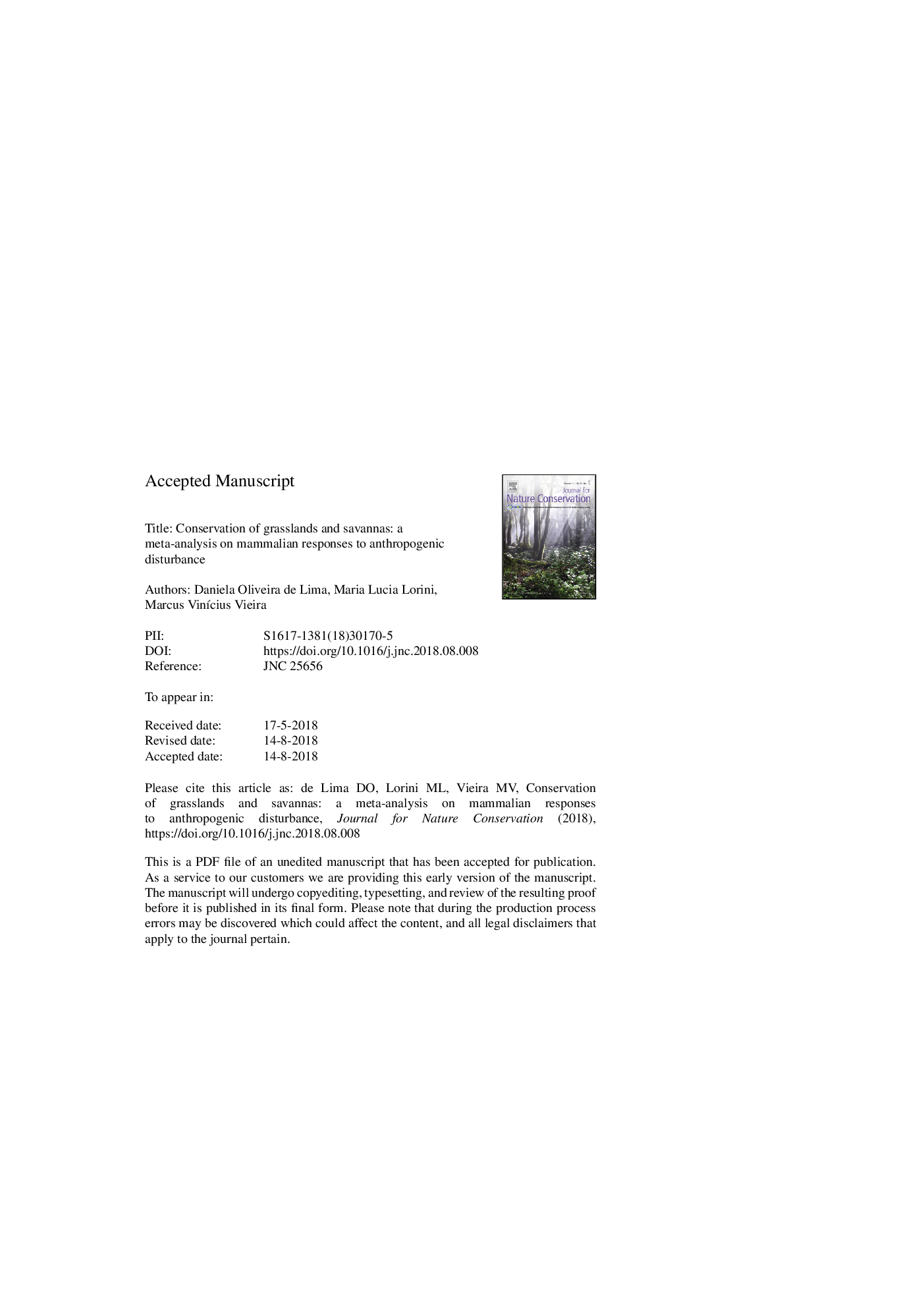| Article ID | Journal | Published Year | Pages | File Type |
|---|---|---|---|---|
| 8849225 | Journal for Nature Conservation | 2018 | 25 Pages |
Abstract
Grasslands and savannas are among the most degraded biomes in the world. These biomes face a diverse number of anthropogenic threats, and despite this scenario, little attention is given to their conservation and sustainable use. This meta-analysis aims to analyze the effect of anthropogenic activities on the abundance of native mammals in these grassy ecosystems. A systematic research in the literature was carried out in order to find studies that analyzed variations in abundance of mammals in response to an anthropogenic activity in any grassland, savanna or shrubland environment around the world. After filtering, 24 studies were analyzed, generating 202 effect sizes for five anthropogenic factors: cropland activities (32 effect sizes - ES); cattle ranching (58 ES); fire (30 ES); shrub/woody encroachment (56 ES) and urbanization (26 ES). Analyzed papers included field data from all continents. In general, mammalian abundance is decreasing under anthropogenic disturbance, as shown by the general effect size. This result highlights the need for more intense conservation programs in grasslands and savannas, since its species are under threat. When comparing the different anthropogenic threats, only cropland activities affected mammals significantly, reducing their abundance. The estimate of the mean effect of cattle ranching, fire, shrub/woody encroachment and urbanization on abundance of mammals did not differ from zero. However, for cattle ranching, fire and shrub/woody encroachment the mean effects measured had large confidence intervals, indicating that these mean effects could not be estimated accurately. Cattle ranching, fire and shrub/woody encroachment effects on mammalian abundance probably depend on their intensity and on the environmental characteristics of each ecosystem, and therefore each case must be analyzed in an ecosystem-specific perspective. Urbanization did not affect mammals, although this anthropogenic activity was analyzed only in two ecosystems where these urban areas do not cover bigger areas. Considering global necessity of maintaining and even increasing food production, we suggest that the cropland activities, which were the greatest threat to the abundance of mammals, should be used in a land sparing perspective. Meanwhile, cattle ranching could be used in a land sharing perspective, provided that cattle density will be restricted to such levels that could also guarantee the conservation of native species. Further studies regarding other taxa are desirable to confirm this recommendation considering the overall grassland and savanna biodiversity.
Related Topics
Physical Sciences and Engineering
Earth and Planetary Sciences
Earth and Planetary Sciences (General)
Authors
Daniela Oliveira de Lima, Maria Lucia Lorini, Marcus VinÃcius Vieira,
